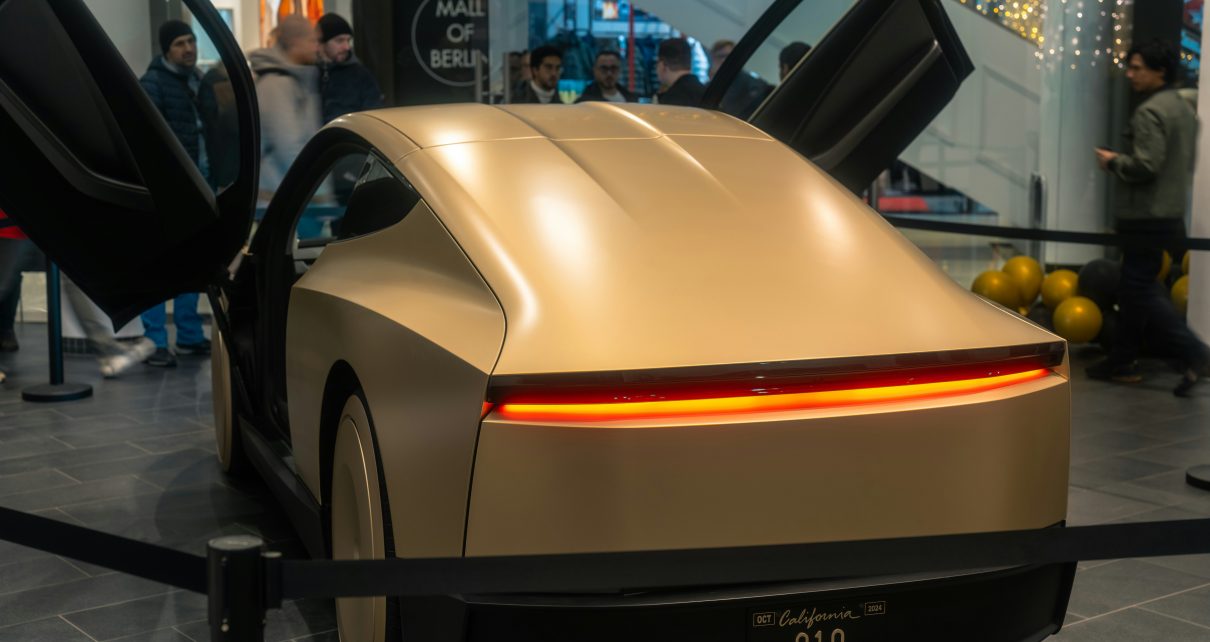Introduction to Tesla’s Robotaxi Event
The buzz around Tesla just hit a new high. With the recent announcement of their Robotaxi event, excitement is in the air as we ponder what this means for the future of transportation. Elon Musk and his team have been at the forefront of innovation, but this latest venture promises to shake up not just Tesla’s business model but also the entire automotive industry. Imagine hopping into a self-driving car that operates like an on-demand taxi service—sounds futuristic, right? But it’s closer than you think. Let’s dive into what a robotaxi really is and explore its potential impact on the market.
What is a Robotaxi?
A Robotaxi is more than just a futuristic vehicle. It represents a new era in transportation.
Imagine hopping into a car that drives itself, navigating city streets and highways without human intervention. This technology is built on advanced artificial intelligence and autonomous driving systems, designed to safely transport passengers from one point to another.
The concept aims to provide an affordable and efficient alternative to traditional taxis or rideshare services. With no driver needed, operational costs could drop significantly.
Users can simply summon their Robotaxi via an app, similar to how we use current ride-hailing platforms. The experience promises convenience at the fingertips of consumers while also addressing urban mobility challenges.
As cities become increasingly congested, the role of Robotaxis may evolve into essential components of smart transportation networks. They hold the potential not only for personal travel but also for enhancing public transit systems across various regions.
The Potential Impact on the Market
The introduction of Tesla’s Robotaxi could redefine urban mobility. Imagine a network of autonomous vehicles, available at the tap of a button. This convenience might shift consumer behavior away from car ownership.
With reduced operational costs, ride-hailing services may lower prices across the board. More affordable rides could attract users who previously leaned towards public transport or personal vehicles.
Investors are paying close attention as well. A successful rollout could boost Tesla’s stock and inspire other automakers to accelerate their own autonomous projects. The market dynamics may experience seismic shifts if traditional businesses fail to adapt.
This evolution isn’t just limited to transportation; it can influence real estate too. Areas near high-traffic locations may see increased value as people opt for robotaxis over owning cars that sit idle in driveways.
The ripple effects on insurance models, logistics, and urban planning will be significant as cities rethink infrastructure needs in light of this new technology.
Possible Challenges and Concerns
As exciting as Tesla’s Robotaxi initiative sounds, several challenges loom on the horizon. Safety remains a paramount concern. While autonomous technology has made significant strides, accidents can still happen. Public trust in these vehicles is crucial for widespread acceptance.
Regulatory hurdles are another obstacle. Governments worldwide will need to create and adapt laws that govern the operation of self-driving cars. This process could take years and complicate deployment timelines.
Moreover, infrastructure plays a critical role in this equation. Cities may not be ready for an influx of autonomous vehicles navigating their streets without dedicated lanes or charging stations.
The impact on jobs is also worth considering. A shift towards robotaxis could disrupt driving-related employment sectors significantly, leading to economic ripple effects that we can’t yet fully predict.
Competitors in the Autonomous Vehicle Market
The autonomous vehicle market is buzzing with activity. Several key players are stepping up their game, aiming to challenge Tesla’s dominance.
Waymo, a subsidiary of Alphabet, has made significant strides in self-driving technology. Their focus on safety and data-driven decision-making sets them apart. With extensive testing in urban environments, they’re positioning themselves as a serious contender.
Cruise, backed by General Motors, is also making waves. They aim for city-centric solutions and have begun pilot programs in major metropolitan areas. Their partnership with traditional automotive giants gives them an edge in production capabilities.
Then there’s Rivian, which combines electric vehicles with off-road features. While not entirely focused on autonomy yet, their innovative approach could shift consumer preferences toward more adventurous uses of self-driving tech.
Each competitor brings unique strengths to the table, creating a dynamic landscape that keeps evolving rapidly.
Tesla’s Previous Ventures and Successes in Disruptive Technology
Tesla has a track record of shaking up entire industries. From electric vehicles to solar energy solutions, the company consistently challenges norms.
Its introduction of high-performance electric cars not only changed consumer perceptions but also pushed traditional automakers to accelerate their EV strategies. The Model S redefined luxury in the electric segment, turning skeptics into believers.
Moreover, Tesla’s Gigafactories revolutionized battery production and energy storage. This ambitious approach reduced costs and increased accessibility for renewable technologies.
The launch of the Powerwall showcased Tesla’s commitment to sustainable energy practices at home. By integrating technology with eco-friendliness, it paved the way for smarter living spaces.
Each venture highlights Tesla’s innovative spirit. With every step forward, it sets new benchmarks in technology and sustainability that competitors strive to catch up with.
Conclusion: Is This the Future of Transportation?
The unveiling of Tesla’s Robotaxi has generated significant excitement and speculation within the automotive industry. As we look at the prospect of a fleet of autonomous, electric ride-sharing vehicles, it’s clear that this initiative could reshape how people think about transportation.
Robotaxis promise to reduce costs for consumers while potentially increasing convenience and accessibility. The idea of summoning a vehicle with just a tap on your smartphone is enticing. Additionally, if Tesla can successfully navigate regulatory hurdles and consumer concerns surrounding safety, it may set new standards for urban mobility.
However, challenges remain. Issues such as insurance liability in accidents involving autonomous vehicles are still being debated. Moreover, public acceptance will play a critical role; some might be hesitant to trust fully automated cars without human intervention.
Tesla isn’t alone in this race; competitors like Waymo and Cruise are also developing their own autonomous solutions. As these companies push boundaries, collaboration or rivalry among them could lead to quicker advancements—or create barriers that slow progress down.
Tesla’s history showcases its ability to disrupt traditional markets through innovation—from electric cars to energy storage systems. If they manage similar success with Robotaxis, the implications could extend beyond personal transport into areas like logistics and delivery services.
As all eyes turn towards Tesla’s next moves in this evolving landscape, one question lingers: Are we witnessing the dawn of a new era in transportation? Time will tell whether robotaxis become commonplace or take longer than expected to realize their full potential.

